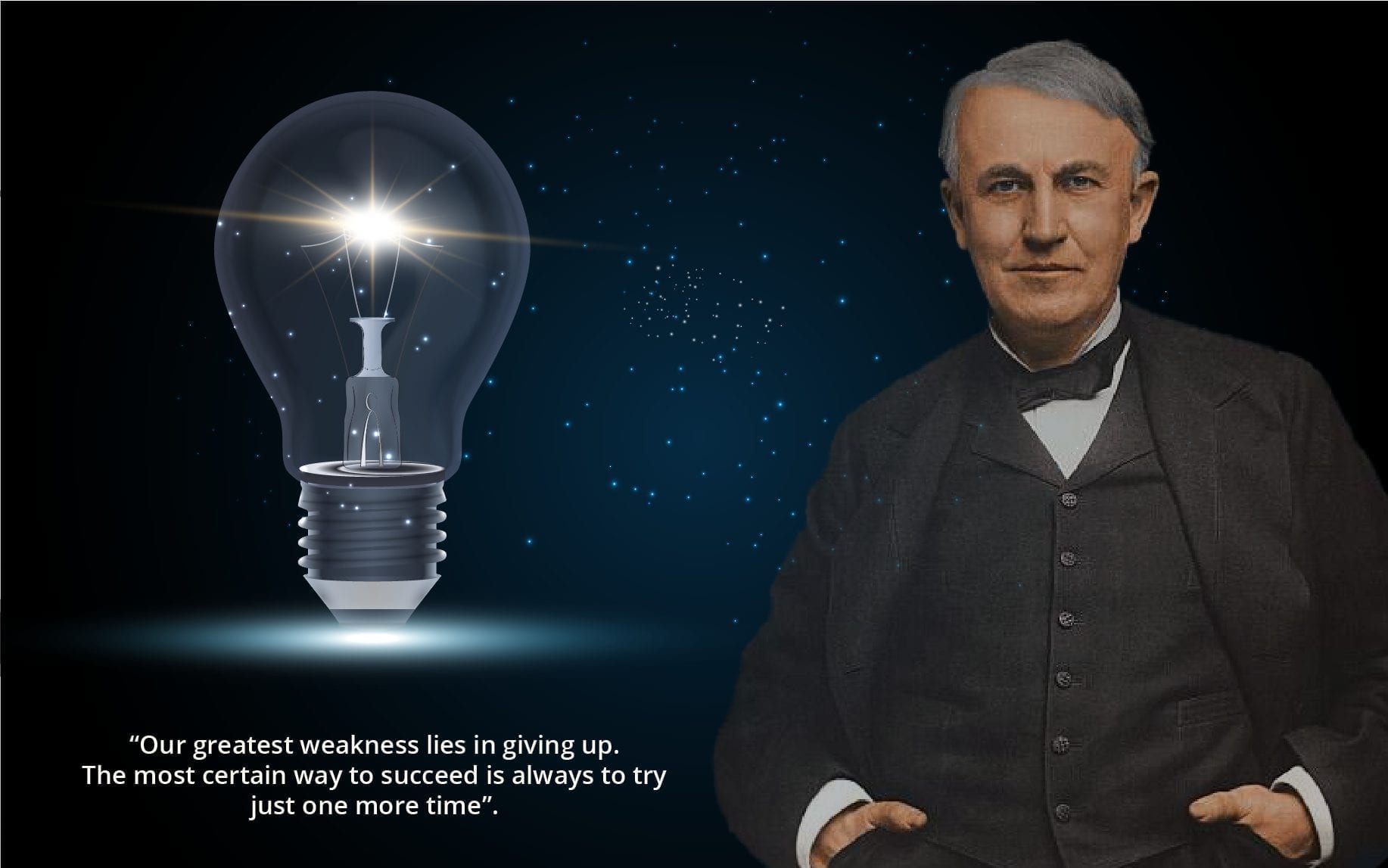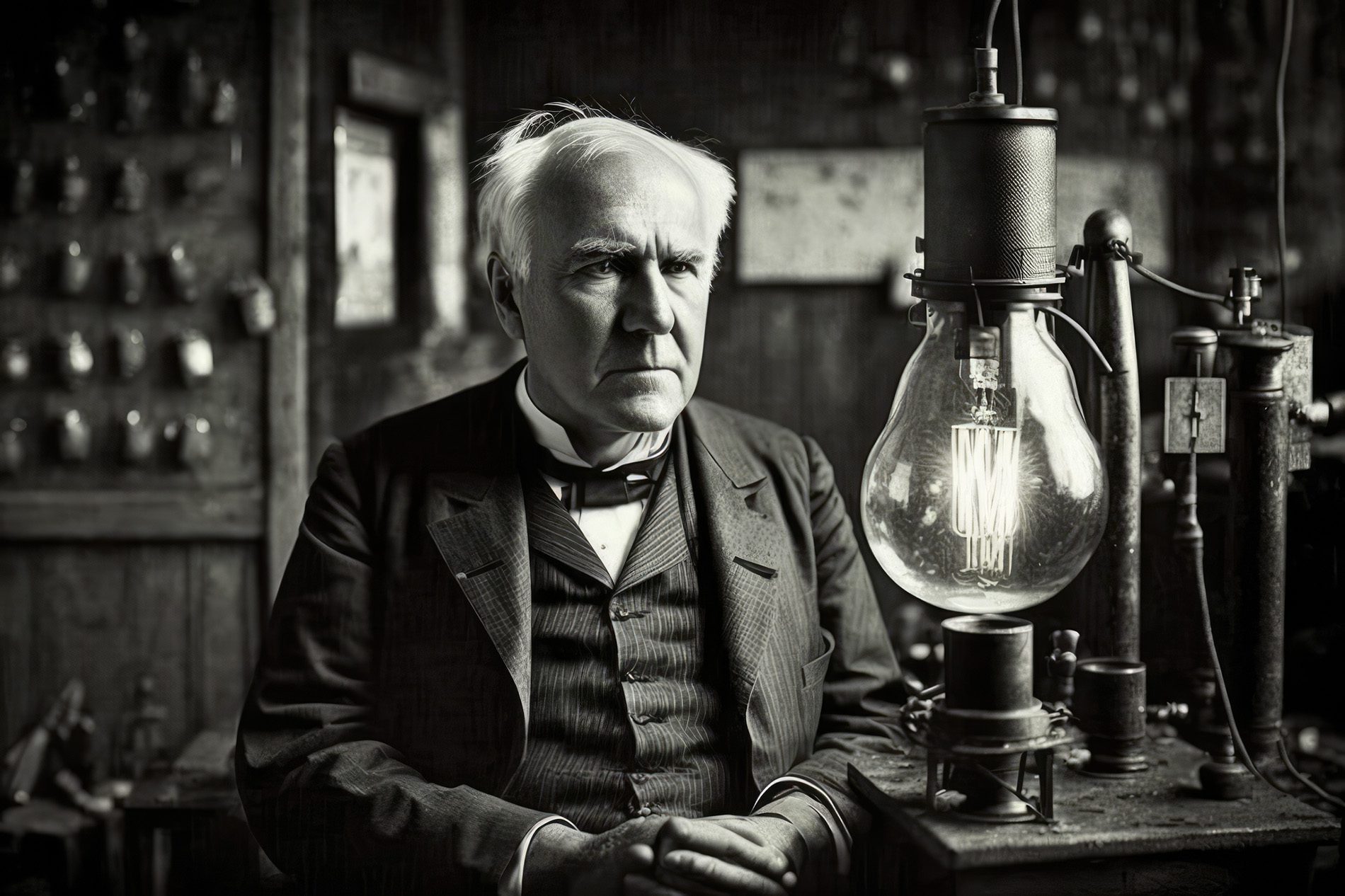Thomas Edison wasn’t just an inventor; he was a financial wizard whose inventions shaped the modern world. But have you ever wondered how much Thomas Edison was worth? Was his fortune as groundbreaking as his lightbulb? Let’s dive into the numbers and uncover the untold story of his wealth. Spoiler alert: it’s more complicated than you think.
When we think of Thomas Edison, the first thing that comes to mind is probably the lightbulb, phonograph, or his 1,093 patents. But beyond the inventions, there’s a fascinating side of Edison that many people overlook: his financial legacy. How much did this genius actually make from his groundbreaking work? Was he swimming in cash like Scrooge McDuck, or was his wealth tied up in something more complex? Let’s find out.
Before we get into the nitty-gritty of Edison’s net worth, let’s set the stage. This isn’t just about numbers; it’s about understanding the man behind the inventions. Edison wasn’t just a guy in a lab coat. He was a businessman, a visionary, and a trailblazer who left a lasting impact on the world. So, buckle up because we’re about to explore the financial side of one of history’s greatest minds.
- What Is Chanteacute Moores Nationality Unveiling The Roots Of A Remarkable Artist
- Brandi Angela Brandt A Rising Star In The Entertainment World
Who Was Thomas Edison? A Quick Bio
To truly understand how much Thomas Edison was worth, we need to take a step back and look at the man himself. Born on February 11, 1847, in Milan, Ohio, Edison grew up in a modest family. He wasn’t your typical child prodigy; in fact, his teachers thought he was "addled." But Edison’s curiosity and determination turned him into one of the most influential inventors in history.
By the time he passed away in 1931, Edison had changed the world with inventions like the phonograph, motion picture camera, and, of course, the incandescent lightbulb. But here’s the kicker: Edison wasn’t just an inventor; he was also a savvy entrepreneur who knew how to turn his ideas into profitable businesses. This entrepreneurial spirit played a huge role in determining his net worth.
So, how exactly did Edison go from a curious kid in Ohio to a financial powerhouse? Let’s break it down.
- Soros Net Worth A Closer Look At The Financial Empire Of George Soros
- The Unforgettable Story Of Joan Staley Death A Journey Through Facts Tributes And Legacy
Key Milestones in Edison’s Life
- 1869: Edison files his first patent for an electric vote recorder.
- 1877: He invents the phonograph, which becomes a commercial success.
- 1879: Edison develops the first commercially viable incandescent lightbulb.
- 1891: He patents the kinetoscope, a precursor to modern motion picture cameras.
- 1911: Edison General Electric merges with other companies to form General Electric (GE).
These milestones didn’t just shape Edison’s career; they also contributed to his financial success. But how much was Thomas Edison worth at the end of it all? Let’s find out.
How Much Was Thomas Edison Worth?
Now, here’s the million-dollar question: how much was Thomas Edison worth? The short answer is that Edison’s net worth was estimated to be around $12 million to $20 million in today’s dollars. But the long answer is much more interesting.
Edison’s wealth wasn’t just about the money he earned from his inventions. It was about the businesses he built and the partnerships he formed. For example, his work with General Electric (GE) played a significant role in his financial success. GE became one of the most valuable companies in the world, and Edison’s contributions helped shape its early success.
But here’s the twist: Edison wasn’t always the richest inventor of his time. While he made a fortune from his patents and businesses, he also faced financial challenges. Let’s explore some of the factors that influenced his net worth.
Factors That Influenced Edison’s Net Worth
- Patents: Edison held over 1,000 patents, many of which generated significant revenue.
- Business Ventures: His companies, like Edison General Electric, contributed to his wealth.
- Investments: Edison invested in various projects, some of which were successful, while others failed.
- Legal Battles: Edison spent a significant amount of money defending his patents in court.
These factors show that Edison’s net worth wasn’t just about the number of patents he held. It was about how he managed his businesses, investments, and legal challenges. Let’s dive deeper into each of these areas to get a better understanding of his financial legacy.
Edison’s Patents: The Cash Cow
One of the primary sources of Edison’s wealth was his patents. With over 1,093 patents to his name, Edison was a prolific inventor who knew how to monetize his ideas. But how exactly did he turn his patents into cash?
First, Edison licensed his patents to other companies. This allowed him to earn royalties without having to manufacture or distribute the products himself. For example, his phonograph patent generated significant revenue through licensing agreements with companies like the North American Phonograph Company.
Second, Edison sold some of his patents outright. This provided him with immediate cash flow, which he reinvested into new projects. For example, he sold his telegraph-related patents to Western Union for a substantial sum.
But patents weren’t always a guaranteed source of income. Edison faced numerous legal challenges from competitors who accused him of patent infringement. These legal battles drained his resources and sometimes delayed the commercialization of his inventions.
The Patent Wars: Edison vs. Tesla
No discussion of Edison’s patents would be complete without mentioning his famous rivalry with Nikola Tesla. While Edison and Tesla had different approaches to invention, their legal battles over patents had a significant impact on both men’s finances.
One of the most notable disputes was over the AC vs. DC power systems. Edison promoted direct current (DC), while Tesla advocated for alternating current (AC). This battle, known as the "War of Currents," led to a series of lawsuits and counter-lawsuits that drained both men’s resources.
In the end, AC won out as the preferred power system, which meant that Tesla’s vision triumphed over Edison’s. But this doesn’t mean Edison lost everything. He adapted to the changing market and continued to innovate in other areas.
Edison’s Business Ventures: The Good, the Bad, and the Ugly
While patents were a significant source of Edison’s wealth, his business ventures also played a crucial role. Some of his ventures were wildly successful, while others ended in failure. Let’s take a look at some of the highlights and lowlights of Edison’s entrepreneurial career.
The Successes
- General Electric: Edison’s work with Edison General Electric laid the foundation for what would become one of the most valuable companies in the world.
- Phonograph: The phonograph became a commercial success, generating significant revenue for Edison.
- Motion Pictures: Edison’s work in the motion picture industry helped establish the foundations of modern cinema.
The Failures
- Iron Ore Mining: Edison invested heavily in an iron ore mining venture that ultimately failed.
- Concrete Houses: He tried to revolutionize the construction industry with precast concrete houses, but the project didn’t take off.
These successes and failures show that Edison wasn’t afraid to take risks. While some of his ventures failed, they also taught him valuable lessons that he applied to future projects.
Edison’s Investments: Smart Moves and Costly Mistakes
Like any savvy entrepreneur, Edison invested in various projects throughout his career. Some of these investments paid off handsomely, while others ended in disaster. Let’s take a closer look at some of his notable investments.
The Smart Moves
- Electric Power Distribution: Edison’s investments in electric power distribution systems helped establish the modern electrical grid.
- Research Laboratories: He invested in state-of-the-art research facilities, which allowed him to develop groundbreaking technologies.
The Costly Mistakes
- Iron Ore Mining: As mentioned earlier, Edison’s iron ore mining venture was a costly mistake that drained his resources.
- Storage Batteries: While his storage battery project eventually succeeded, it took years of research and development, costing him significant time and money.
These investments highlight Edison’s willingness to take risks and his ability to learn from his mistakes. While not every investment paid off, they all contributed to his overall financial legacy.
Edison’s Legal Battles: The Price of Success
As a prolific inventor and entrepreneur, Edison faced numerous legal challenges throughout his career. These battles weren’t just about protecting his patents; they were also about defending his reputation and maintaining his competitive edge.
One of the most notable legal battles was the "War of Currents" with Nikola Tesla. While Edison ultimately lost the battle over AC vs. DC, he continued to innovate in other areas, adapting to the changing market.
Another significant legal challenge was the dispute over the invention of the lightbulb. Edison faced numerous lawsuits from competitors who claimed that they had invented the lightbulb first. These legal battles were costly and time-consuming, but they also helped establish Edison’s reputation as a pioneer in the field.
Edison’s Legacy: Beyond the Numbers
While it’s fascinating to explore how much Thomas Edison was worth, his legacy extends far beyond his net worth. Edison’s contributions to science, technology, and business have had a lasting impact on the world. His inventions have improved countless lives, and his entrepreneurial spirit continues to inspire inventors and entrepreneurs today.
So, what can we learn from Edison’s financial legacy? First, success isn’t just about the money; it’s about the impact you have on the world. Second, taking risks and learning from your mistakes is essential for long-term success. And finally, protecting your intellectual property is crucial in today’s competitive marketplace.
Conclusion: What Did We Learn?
So, how much was Thomas Edison worth? The answer is somewhere between $12 million and $20 million in today’s dollars. But the real value of Edison’s legacy lies in his contributions to science, technology, and business. His inventions have changed the world, and his entrepreneurial spirit continues to inspire generations of inventors and entrepreneurs.
Now, it’s your turn. What do you think about Edison’s financial legacy? Do you think he made the right decisions, or do you think he could have done better? Leave a comment below and let’s start a conversation. And don’t forget to share this article with your friends and family. Who knows? Maybe one of them will be inspired to become the next Thomas Edison!
Table of Contents
- Who Was Thomas Edison? A Quick Bio
- How Much Was Thomas Edison Worth?
- Edison’s Patents: The Cash Cow
- Edison’s Business Ventures: The Good, the Bad, and the Ugly
- Edison’s Investments: Smart Moves and Costly Mistakes
- Edison’s Legal Battles: The Price of Success
- Edison’s Legacy: Beyond the Numbers
- Conclusion: What Did We Learn?
- Hunter Thompson Raising Capital The Untold Story Of Grit Vision And Financial Mastery
- Gary Allen Russell The Rising Star You Need To Know


